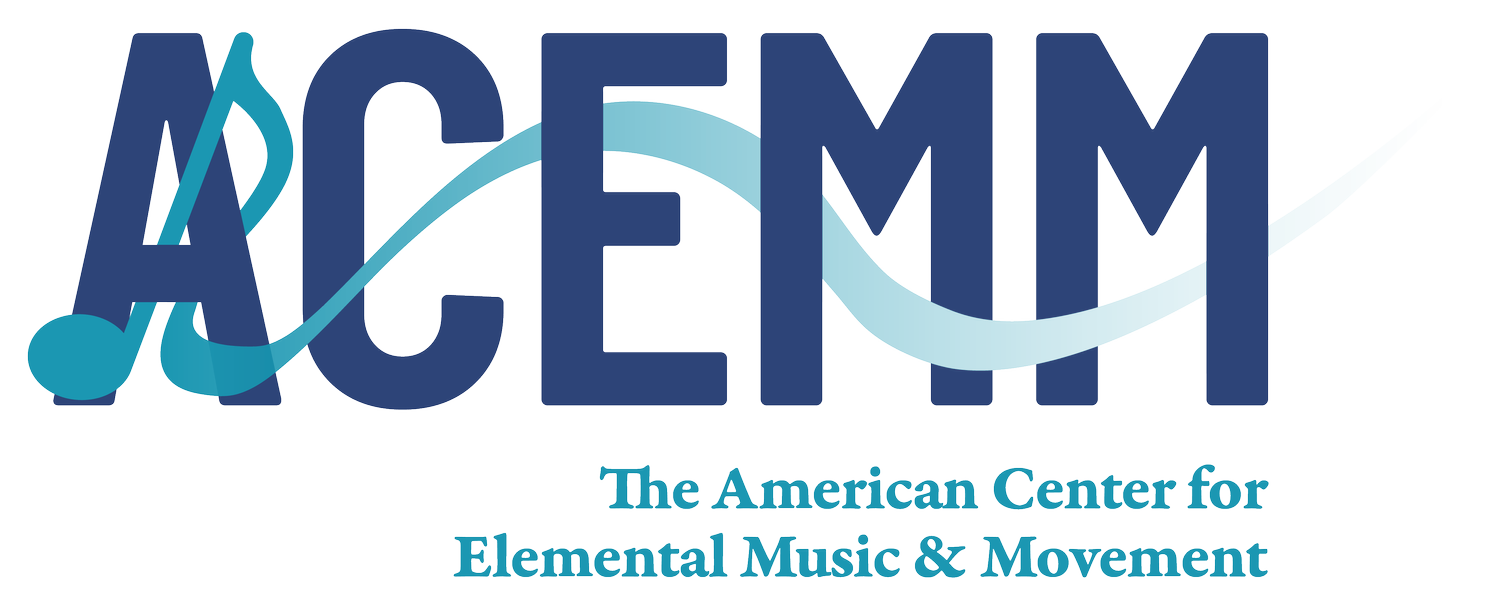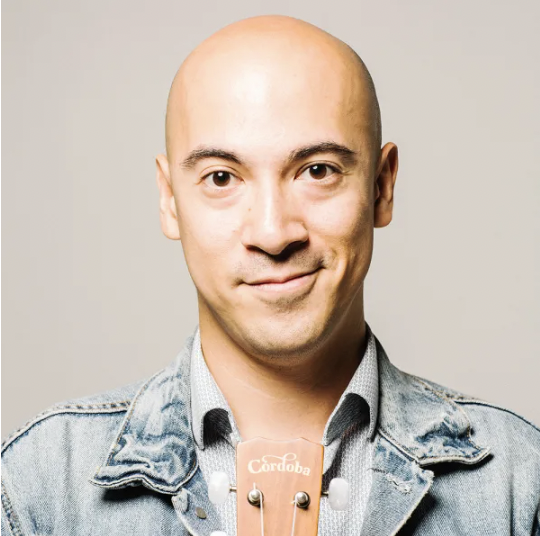On Music and Grief: Using Song to Help a Community in Trauma
by Jonathan Seligman
As music teachers, we thrive off the moments that touch a student’s life. There is excitement when a shy student finds their confidence on the violin; excitement when an English Language Learner finds connection in choir. These moments of impact affect us for the rest of our lives. Last year, I had that same opportunity to create impact—but it was not out of joy, rather out of tragedy and necessity. My mentor and friend, our school’s beloved 6th grade teacher, Lee Sison, unexpectedly passed away.
Mr. Sison was a staple of our community, teaching at Casillas Elementary for 16 years. He was more than “just a teacher”. Within his time at Casillas, he fostered a culture of family at the school. With Lee, to be a student was to be more than an individual who learned facts. You were a part of something bigger. Lee helped you feel that—even if you weren’t a part of his class. He bestowed that same feeling amongst his coworkers. Lee welcomed you with open arms and placed you in positions to grow the community and yourself.
So when he passed away, there was a void. A pain and a void.
A song to reconcile the void.
The community at large gathered together. Parents of former students led a vigil right outside the school. The community shared their pain and sorrow. Many were there during Lee’s funeral to commemorate his life and celebrate his impact.
After the funeral had passed, life pushed forward. Quarter 2 came along and a new teacher took over his classroom. From the shadows, the teachers grieved, yet on the surface, we pushed forward. We had to for our students.
But our students weren’t okay—especially those who had him as a teacher. At the age of 11, how does one process your leader being gone? How does one wrestle with the man that you looked up to no longer being present in your life? How do you even ask for help? Asking an adult for wisdom isn’t going to bring back the man you miss. For some, to shed tears is to show weakness. You’re in 6th grade. You’re almost in middle school—two steps shy of adulthood. You’re “supposed” to have this figured out. So how do you ask for help? How do you find closure with unexpected losses? Even at the age of 29, I still ask myself that question.
About a month after Lee’s passing, I came across the song “Saturn” by Sleeping at Last. The piece starts out with a long string exposition, full of tension and decay, layers and minimalism. The tension grows until 1:55 when the voices finally enter on a melismatic “ooh,” only to be decayed by a string unison and the dying of the beat of the toms. Then come in the words.
You taught me the courage of stars before you left
How life carries on endlessly even after death
With shortness of breath you explained the infinite
How rare and beautiful it is to even exist
I couldn’t help but ask you to say it all again
I tried to write it down, but I could never find pen
I’d give anything to hear you say it one more time
That the universe was made just to be seen by my eyes
With shortness of breath I’ll explain the infinite
How rare and beautiful it truly it is that we exist
This was the song we needed to sing.
Despite it being a terrible choice pedagogically—being over an octave and a half wide in range, bearing odd syncopation, residing in the chest voice—we needed to sing this song.
To the non-religious, this song was a safe space to send out their turmoil and anger. For the religious, this song was an opening to believe once again despite the tragedy in their life. This was a song for all to draw out of the shadows the pain and emotions we felt and bring to the light that we were all still suffering. To sing this song as a choir would healthily acknowledge that we suffer together. We all miss Mr. Sison, but we miss him together. That despite the fact that the powers of time still push the world along, we still grieve.
And that’s okay.
Rehearsing and performing a song of hope.
Bringing this song to the students was not easy. From 4th-6th grade, after showing them the song in January, the students were stunned at the poignancy of the words to their own emotions, giving a true emotional response without reservations. Five months later, they all still deeply missed Mr. Sison. Many shared their hurt. Some questioned why we were doing this song at all. But after the many thoughts, they unanimously agreed that this song needed to be sung.
From thereon, choir became more than just a time to sing. We gave space to have students share memories of their late teacher. Former students would even walk in and share their stories as well.
In conjunction to the singing, the choir did a movement activity while the string players—all former students of Casillas—played the opening. The choristers had light-up orbs during the instrumental section to move around, representing the memories they had of Mr. Sison. Moving in improvisation, the orbs conjoined and separated. Once the lyrics began, students held onto their orbs under their faces, lit in fluorescent blue and yellow. Lit like candles.
The concert was not easy. “Saturn” being the penultimate song, there was a great mix of emotions afterwards. Some shocked, but most were extremely positive. Lee’s family had been to many events that commemorated him, but they admitted that this was uniquely special. Strong-willed students who did not shed a tear throughout the year were red-eyed. Colleagues were thankful. There was a sense of release that some had not the ability to express.
Here is the performance. How are you impacted by this experience?
What is our role during times of grief?
As music enthusiasts, we understand the power of the auditory arts. As music educators, we advocate for what we teach because we know music can heal. A song can bring happiness to a child who is having problems at home. A dance can bring joy to a child who is having trouble connecting with others.
But grief? Grief is hard.
There is no word that can bring a child out of grief as we call will continue to grieve after loss. Even for adults, grief is hard. We try to compartmentalize the pain and grope in the darkness for the good in the world. We try to ignore it. We dig it in a hole and box it away. And that often leads to isolation.
But what if we leaned into it? What if we taught our students to lean into it? You’d be surprised what you would find.
“She told me that couldn’t help but cry [when singing “Saturn”] but that they were tears of healing.”
-Luisa, mother of a 5th grade chorister
“It was hard for me to finish the song without tears. Every word I sang, every beat, a memory of me and [Mr. Sison] flashed before my eyes. It reminded me of the pain and hurt me and all the other kids in his class had experienced earlier this year. [It reminded me of] how we grew and overcame that sorrow.”
-Lilly, 6th grade chorister
“Music has always had a way of tugging at my heart strings, and if it’s kids singing, it makes it even more emotional for me. Add in that my own son was singing, as well as many of my students, and it made this performance an extremely emotional experience. Listening to this performance brought up many emotions very quickly. We as a community went through so much last year with the loss of our beloved Mr. Sison, and I feel like some of the kids didn’t get a chance to really grieve and face their emotions during this tragic time. I felt that this performance was a necessary release of emotions for our whole community. There wasn’t a dry eye in that room, and it brought us closer together and I think it added to our healing process. “
-Melissa, Teacher/Parent and Friend of Lee
“What courage it takes for these young ones to rehearse and practice and perform such a beautiful tribute! Not only did their performance help each other but helped the community as well. The power of music, in this performance is evident and much needed as everyone grieves in their own personal way. I believe and admire these children, under Jonathan’s direction, to begin the healing process and “moving on” through their music and song. Somehow and in some way, I know my brother’s spirit was present on that night, and just as he was in life, always cheering and supporting his kids.”
-Donna, sister of Lee
There is no one right way to handle loss. Grief is a pain that no doctor could remedy. But through vulnerability, there is empathy. Through empathy, there is understanding. Through understanding, maybe there could be healing. Vulnerability can’t be taught in a textbook. But through song, we have the power to invite the victim in, to suffer and heal in community.
Afterword from the author…
The first draft of this article was written in the winter of 2019, reflecting on grief and the need for intentional music for our community to partake in. When my District closed on 13 March 2020, I suffered a different kind of grief. Many of us did. All of us did—especially our children. Months have passed, but normalcy is far from nigh.
While I wrote this article months ago and the landscape of reality has changed greatly, the core message still stands. I implore all of us to think less about how we are to teach our students in unprecedented times, but rather what. What does our community need? And what can we do to bring that to fruition? While our communities attempt to sew patches on the wounds to make the push on forward, we are all still in grief. We can’t fix that, but through intentional song, we have the power to help heal.
Jonathan Seligman is an elementary music educator at Casillas Elementary in Chula Vista, CA. Seligman bears certifications in Feierabend Conversational Solfege, First Steps, and Orff Level III. Creating the music program from scratch, he also leads the three choirs and concert bands at his school site. His music program is honored to have worked with different groups/organisations, such as the Save the Music Foundation, GRAMMY award winning band Switchfoot, etc.
Seligman is also the co-founder of Chaotic Harmony, a podcast that discusses the joys and struggles of being an educator. On top of hearing the narratives of other educators, they also delve into a broad spectrum of topics that many in the elementary field face.

